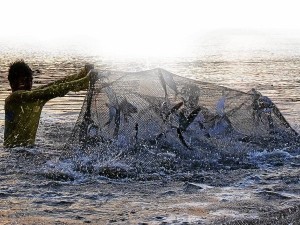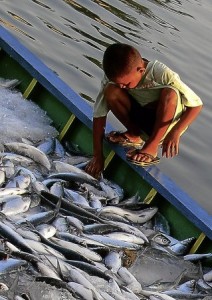Dagupan bangus to soon get a brand

THROUGH hard work, Dagupan City’s milkfish trade acquires its own brand. EV ESPIRITU/INQUIRER NORTHERN LUZON
DAGUPAN CITY—Bangus (milkfish) produced in this city and some Pangasinan towns will finally get a “brand” after concerned agencies committed their participation in the bangus branding program of the Bureau of Fisheries and Aquatic Resources (BFAR).
Nestor Domenden, BFAR Ilocos regional director, says the branding program would hopefully put a stop to the practice of marketing bangus stocks from other provinces as coming from Pangasinan.
“This practice makes it look like all bangus being sold in Luzon comes from Pangasinan,” Domenden says during the recent 18th Fisheries Industry Forum for Stakeholders sponsored by BFAR.
He says the concept of branding the bangus cropped up as early as 2008 during a meeting of the Ilocos Regional Development Council, which issued a resolution to start branding the fish.
The RDC resolution “strongly supported the promotion of Pangasinan bangus branding, accreditation and certification to ensure and protect the genuineness of the product for sustained patronage of consumers and global competitiveness.”
Article continues after this advertisement
The milkfish from Dagupan is being marketed as the “best tasting bangus in the world.” EV ESPIRITU/INQUIRER NORTHERN LUZON
Bangus is the “one town, one product” of the Ilocos region, the top producer of the national fish, but it is mainly produced in Pangasinan.
Article continues after this advertisementThe milkfish from Dagupan is being marketed as the “best tasting bangus in the world,” primarily because of the water quality in the city. The city holds the Bangus Festival every May.
Many western Pangasinan towns like Bolinao, Bani, Alaminos City and Sual also produce quality bangus, but even in local markets, bangus produced in Dagupan are more expensive than those coming from other places.
The Dagupan city government is the only local government unit that has shown interest in branding its fish product.
But even with the success of the city in marketing its main product, Domenden says that there are still problems that hinder the growth of the bangus industry, such as monoculture, which underutilizes the capacity of fish farms.
He explains that in Thailand, five to seven kinds of fish are cultured in one fish farm to maximize the profit potential. A similar system can be implemented in Pangasinan to help augment the income of the bangus producers.